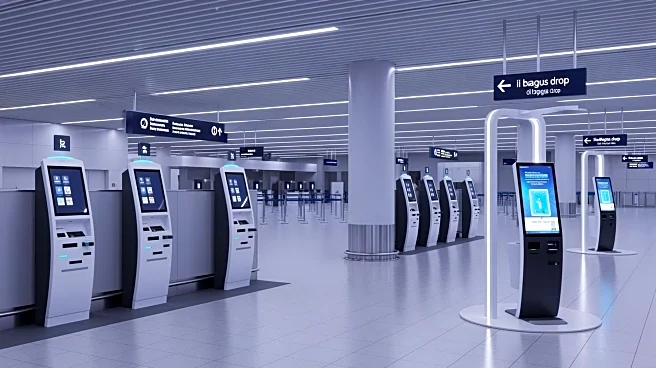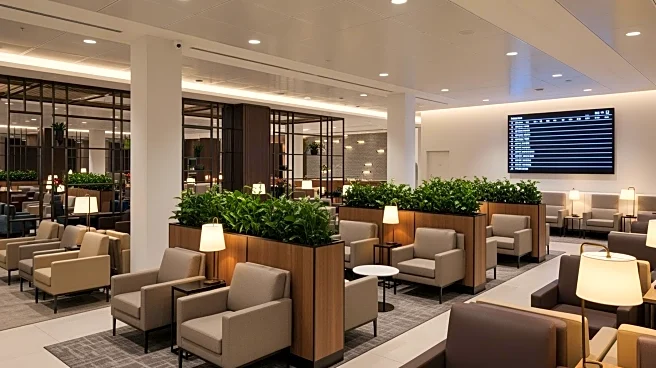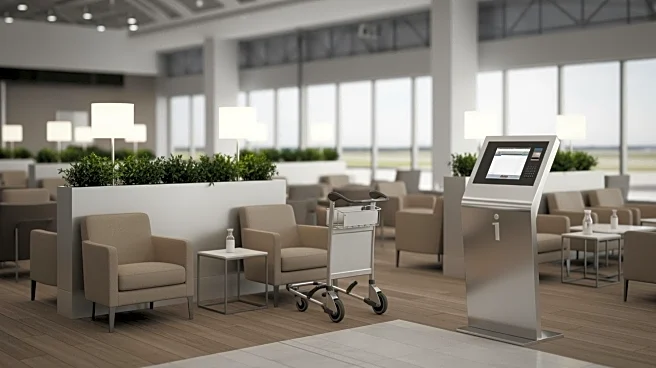What's Happening?
Delhi's Indira Gandhi International Airport (IGIA) is set to reopen its upgraded Terminal 2 (T2) on Sunday, coinciding with the start of the winter schedule. The refurbishment was inaugurated by Civil
Aviation Minister K Rammohan Naidu, alongside senior officials from the ministry of civil aviation, the Airports Authority of India (AAI), the Central Industrial Security Force (CISF), and the Delhi International Airport Limited (DIAL). The revamped terminal aims to offer passengers a smoother, more efficient, and technology-driven travel experience while balancing flight operations across all terminals. Key features include a Self-Baggage Drop (SBD) facility, six new Passenger Boarding Bridges (PBBs), Virtual Information Desks, improved wayfinding signage, and better facilities for persons with reduced mobility (PRM). Additional upgrades include new ceilings with skylights, advanced HVAC systems, modern fire safety mechanisms, and a high-resolution Flight Information Display System (FIDS).
Why It's Important?
The upgrades at Delhi Airport's Terminal 2 are significant as they aim to enhance passenger convenience and operational efficiency. The introduction of technology-driven solutions like Self-Baggage Drop and Virtual Information Desks is expected to reduce waiting times and improve the overall travel experience. The reshuffling of airline operations across terminals, particularly for major carriers like IndiGo and Air India, will streamline flight operations and potentially increase the airport's capacity to handle more flights. This development is part of a broader effort to transform India's airports into world-class transit hubs, which could boost the country's aviation industry and support economic growth by facilitating smoother domestic and international travel.
What's Next?
With the reopening of Terminal 2, airlines will undergo a realignment of operations. IndiGo will operate from all three terminals, while Air India will shift around 60 domestic flights from Terminal 3 to Terminal 2. Air India Express will move all domestic services to Terminal 1, and SpiceJet and Akasa Air will continue operations from Terminal 1. This reshuffle is expected to improve connectivity and passenger convenience, handling about 120 domestic flights daily from the upgraded Terminal 2. The ongoing development of India's airports into world-class transit hubs is likely to continue, with further upgrades and expansions anticipated to meet modern travel needs.
Beyond the Headlines
The refurbishment of Terminal 2 at Delhi Airport reflects a broader trend of integrating modern technology and smart infrastructure into airport design. This shift towards technology-driven solutions not only enhances passenger experience but also aligns with global standards for airport operations. The focus on improved accessibility and inclusivity, such as facilities for persons with reduced mobility, highlights an ethical commitment to making air travel more accessible to all individuals. As airports continue to evolve, these advancements may set new benchmarks for airport design and operations worldwide.











